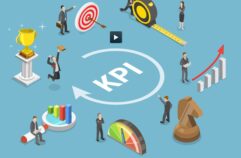What is the Competitor Analysis?
Competitor analysis in SEO refers to a power research strategy that will help you go over the top rank means more traffic which results in better revenue and lead generation. It is a forming research and building strategies to unveil SEO opportunities you may not have to comprehend elsewhere.
Why Competitor Analysis Required?
There is plenty of competitive analysis for SEO but one that is common is: analyzing how a competitor site (keywords, content, backlinks) are and this gives you the opportunities to go at par and finding the right strategies to improve your SEO ranking and beat the competition.
In layman’s term, competitor analysis requires searching for the links, keywords, content to get better insights on your SEO competitors to conclude by conveying different elements together in a formidable way to build and implement your SEO strategies.
How to Identify who the competitors are?
There are hundreds of ways to find out who the competitors are but SEO competitive analysis for a “novice” simply means identifying the competitor by entering the top keyword in google and check domain ranking manually.
In broader terms, one can search 10-20 terms of the most searched keywords and keep a track of everything in an excel spreadsheet and evaluate the google SERPS results on which domains appear repeatedly and in what place.
The thing to cover in in competitor analysis
- What keywords they are targeting – To make life easier many people use an SEO tool to check the keywords ranks which are available in particular SEO tool databases. This technique is widely used to find out who your “True” competitor is.
- Metadata information – Metadata information is a crucial element for any SEO strategy. The metadata represents the summary of the post, webpage in it. It helps users understand and find out information through the relevancy of their search.
- Internal Linking – Internal linking helps search engines to understand the structure of your site hence, it establishes a hierarchy on your site by permitting a user to provide the important pages and post more value than the others.
- Content Analysis
- Keyword Density – Keyword density is generally referred to as the frequency of a keyword appearing on content and measured as a ratio or percentage of the overall word count.
- Content Word count – The content word count is the ideal length of an article or piece of the article used in the blog, webpages. The general thumb of the rule says the content word count is supposed to be 300 or more words anything lesser than this considered as “thin content” by search engines.
- Content context and intent – It is a broader aspect where marketers use content context and intent to identify which of course help search engine understand the user intent matched with the input context.
- The uniqueness of content – A piece of content is referred unique if it is not duplicated anywhere else. This means websites having unique content has a greater chance of ranking.
- Multimedia – To maximize the potential of your SEO multimedia consolidate images, videos, audios that would put up additional signals to google which helps in better SEO rankings.
- Analyze Outbound links – analyzing the outbound links would mean evaluating the links from your pages to an external site. Greater the number of outbound links without no-follow attribute in anchor tags will cause damage to the ranking and page authority.
- Analyze website Designs & Structure – The analysis process shelters the technical aspects of a web HTML and strong scrutiny of a web design ensures multiple strategies for addressing issues in the web page design.
- Analyze Social Media – social media analysis is evaluating the data retrieved from the previous post, interactions, and posts
- Analyze Off-Line strategy – It is a type of marketing strategy that makes use of offline media channels to raise awareness of products and services using billboards, signs, and pamphlets.
- Analyze Backlinks – It is a technique that shows all the links for a website which helps in ranking in search engine. Backlink analysis also distinguishes between the good and bad links.
- How they design and made homepage content – Website design and homepage content share high relevance to your brand and its needs. A visual overview of the content on the homepage looks great and makes the first impression on your visitors.
- The ratio of No-Follow and Do-Follow link – It is a correlation between the no-follow and do-follow links a website. It is a long-standing argument but usually, the truth is 60% do-follow links and 40% no-follow links.
- What their anchor text – Anchor text is referred to as a text with a clickable link in it. It is usually known as a hyperlink. The best SEO practices dedicate an anchor text to the page relevant to the page.
- Technical SEO – It applies to website and server optimizations or tweaks that help in google search rankings and indexing your site in more practical terms.
- Website performance (Loading Speed) – The following terms refer to the page speed i.e. the length of time at which a webpage media content is loaded in a browser from hosting servers.
- Any Hidden Links – Hidden links are a part of an aggressive SEO strategy by which anyone on web content can attain ranking for the keywords that are not visible within the web content, on the other hand, it is crawled by google spider or bots. This technique is widely used and known as content cloaking.
- Find broken pages – Broken links to the pages are known as dead or links to a particular web page that no longer serves its purpose and often end with 404 errors. Find broken links to the pages on a website using any SEO tool.
- Traffic Analysis –
- Breakdown by Country – It refers to analyzing the total traffic and traffic share from specific or each country in percentage.
- Mobile and Desktop – Analyzing traffic from mobile and desktop will help a website owner how well a site is performing over different devices. Using such values will give you more insights on the digital presence and performance of the website.
- Organic, social and Referral – Organic traffic refers to people who are visiting your website from search engines, social traffic means people who visit your website from various social networks and social media platforms whereas referral traffic simply means that comes from sources outside of its search engines.
- Traffic Growth month by month – It refers to the number of traffic received on a website for a single month. To calculate month by month traffic simply take the difference between the total month of users vs last month’s total users.
- Keywords positions – In simple terms, keywords positions are the rank a website retains in the search engines with respect to the other competing website for a specified keyword.
- Best Performing pages and keywords – It refers to the keywords or pages that are well optimized for search engines and receives potential visitor base on keywords for SEO.
- Competitor’s Online Reputation
- Customer Reviews – It is a review of certain products and services by someone who has actually purchased and experienced good or bad with the product or service.
- Brand Mentioned – Its an instance when a brand or product is mentioned online using different social media platform, posts, website posts and article which is used as social proof and get higher ranking in search engines.
- Tools for competitor analysis
- Moz – Moz is regarded as the most community-driven SEO tool on the planet. The powerful SEO tool which is used for Competitor Analysis and operates as a powerful competitor research tool to help a website rank higher and earn more conversations.
- Woorank – It is an effective tool for strong competitor analysis: Know what your competitors are doing and see in-depth competitor analysis.
- Google Page Speed Insight– This is a tool used for performance score, find matchless real field data, and a place for improving your website speed.
- UberSuggest- Leading digital marketer “Neil Patel” owned tool generates keyword ideas and content marketing ideas for robust competitor analysis such as site audit, backlink checker, and SEO analyzer.
- Screaming Frog– This is a tiniest SEO spider small desktop program for PC & Mac which works is to crawl websites for links, images, and CSS, script, and apps. It is a great tool for SEO perspective that lets you know what a google search spider would see when it crawls a website.
- Ahrfes – It is the most popular and widespread SEO tool used by millions of people. The tool gives deep insight on how a website is performing and leverages the way to increase the search traffic. Not just this the tool is highly used for competitor research, competitor analysis rank tracking, and site audit. It’s a full SEO suite that has more than a billion webpages indexed to come out with more precise data.
- SEMrush– It is another most viable SEO toolset for keyword research, site audit, and competitor research by identifying common and unique keywords.



